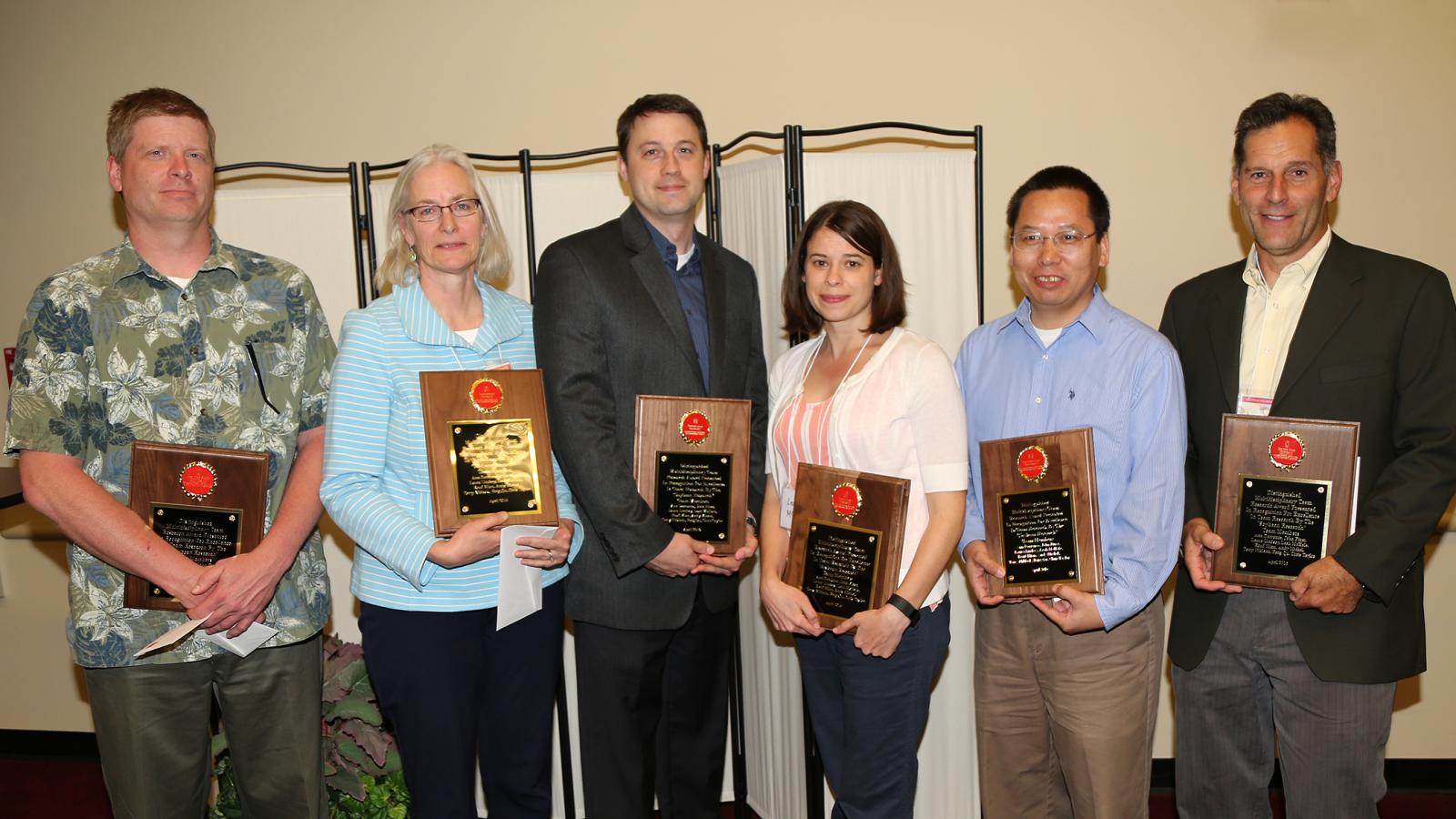Pictured here from left: Chris Taylor, Anne Dorrance, Andy Michel, Leah McHale, Feng Qu, John Finer. Not pictured here: Rouf Mian
Abstract
New varieties with new traits are released onto the market each year for many crops. The primary focus for plant breeders is to keep pushing for higher yields in developing new varieties with a very long list of specific food, feed, and trait qualities. Soybean is no exception to this demand as varieties today can be used for tofu production, high oleic or low linolenic type oils, and higher protein for better animal feed to name just a few. As a result, plant breeders have shortened the cycle of breeding new varieties and greatly expanded the diversity of the types of lines that they work with. Screening these lines for resistance to plant pathogens and pests is becoming a limitation in variety development. Our research efforts are focused on identifying the specific form of the genes that contribute to expression of resistance to many of the plant pathogens that infect and pests that attack soybean in Ohio and many areas of the US. Armed with this information, breeders can use marker-assisted selection with markers that are derived from the specific genes that contribute to the expression of the desired trait. This approach will be a big step forward to avoid the “boom-and-bust” cycle as well as “escapes” that occur for disease and pest resistance breeding in the variety development process.
To achieve this goal, the CAPs project aims to: develop a high throughput pipeline to identify the genes associated with resistance to plant pathogens and insect pests of soybean; from these results we will be able to develop models and hypotheses for how quantitative resistance in soybean is effective for broad-spectrum or pathogen-specific control fungal, oomycete (both necrotrophs and biotrophs), insect and nematode pathogens.
Team Members
- Anne Dorrance will be responsible for evaluating populations for resistance to plant pathogens, perform phenotypic assays, and overall coordination of the project.
- Leah McHale will develop soybean plant germplasm that is necessary for the various experiments and is responsible for transcriptional analysis of response to oomycete plant pathogens
- Andy Michel is responsible for phenotypic screens with insects and transcriptional analysis for the response to feeding of soybean aphid.
- Christopher Taylor will complete transcriptional analysis of the soybean’s response to soybean cyst nematode as well as functional analyses of putative candidate genes using a composite plant system.
- Feng Qu will be responsible for functional analysis of genes using virus-induced gene silencing.
Team Collaborators
- Terry Niblack, The Ohio State University
Strategic Areas
- Crop Improvement & Functional Foods
- Plant-Microbe Interactions

